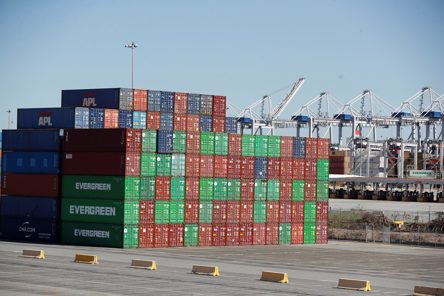The recent Shanghai lockdown pandemic restrictions being put in place throughout China, wherever infections appear, continues to challenge individuals and businesses alike, and is causing stress and uncertainty on global supply chains.
After 2 months in lockdown (as of June 1) Shanghai officially began their phased reopening and gradual relaxation of pandemic preventative measures, impacting around 22 million people in the city. Public transport has resumed operations and the Epidemic Prevention Pass is no longer required for trucking within Shanghai, although drivers are still officially required to provide a nationally recognized 48-hour COVID test result and traffic permit, which should mean transport can slowly return to some semblance of normality.
The lockdown measures not disrupting the lives of the 26 million residents forced to stay home for months. It's also negatively impacting warehouse operations, transportation, and staffing, except for factories, air and ocean terminals where staff worked under closed loop systems to keep operating as normal.
The key issues manufacturers experienced in Shanghai during this lockdown has been lack of staff able to return to work, and lack of trucking availability due to restrictions. The impact on supply chains was felt almost immediately as Shanghai began receiving a flood of ships in a matter of days and by early May, 344 container ships were docked. This figure provides a perspective on the US supply chain crisis as a whole. At the peak of the crisis, approximately 100 container ships were waiting at the two busiest ports in the US (Los Angeles and Long Beach). The knock-on effect of this influx in Shanghai was the impact on surrounding ports such as Ningbo and, where a lot of cargo was diverted, placing further pressure on already-strained supply chains.
In addition to China's lockdowns, other factors have contributed to congestion and delays in major ports worldwide. Due to the world’s reliance on China as the “world’s factory,” a huge number of products are being affected in some way by the ongoing lockdown and delays are common. Additionally, due to the uncertainty in China, an increasing number of companies are moving production to Vietnam, though this isn’t solely a lockdown issue.
Retailers and the wider industry have done their best to manage supply chain issues, but even when they rise above these challenges or implement measures to plan ahead and offset impacts, additional obstacles such as delayed shipments and production will affect inventories later in the year. Extra preparation for the rest of the year and ongoing will need to be taken into account, and it is essential to consider delay factors with the oncoming peak shipping season, starting in mid-August and lasting until the end of October. At the end of the day the added costs will be felt by the end consumer.
The knock-on effect of these challenges is undeniably impacting businesses and consumers, and will continue to do so through peak shipping season, the busiest season for shippers and retailers, and for the foreseeable future.
Though the expected demand for freight will increase in line with recent years, the unprecedented impacts of the COVID pandemic is decreasing supply, resulting in tighter capacity, high freight rates, and difficulties for retailers and logistics providers. Though the unfolding situation in China is a significant factor, the scope of these impacts depends on a multitude of factors.
The good news is that it’s not all doom and gloom. There are ways you can navigate the current market and be as prepared as possible, such as, keeping track stock, increasing inventory whenever possible, remaining flexible, taking advantage of supply chain management tools, being honest with customers about delays, and staying informed. Most importantly, it’s important to keep a cool head amongst this volatility and remember that this too shall pass.
For all our valuable clients, SEKO is here to help, so please don’t hesitate to reach out if you need assistance navigating this challenging time.





